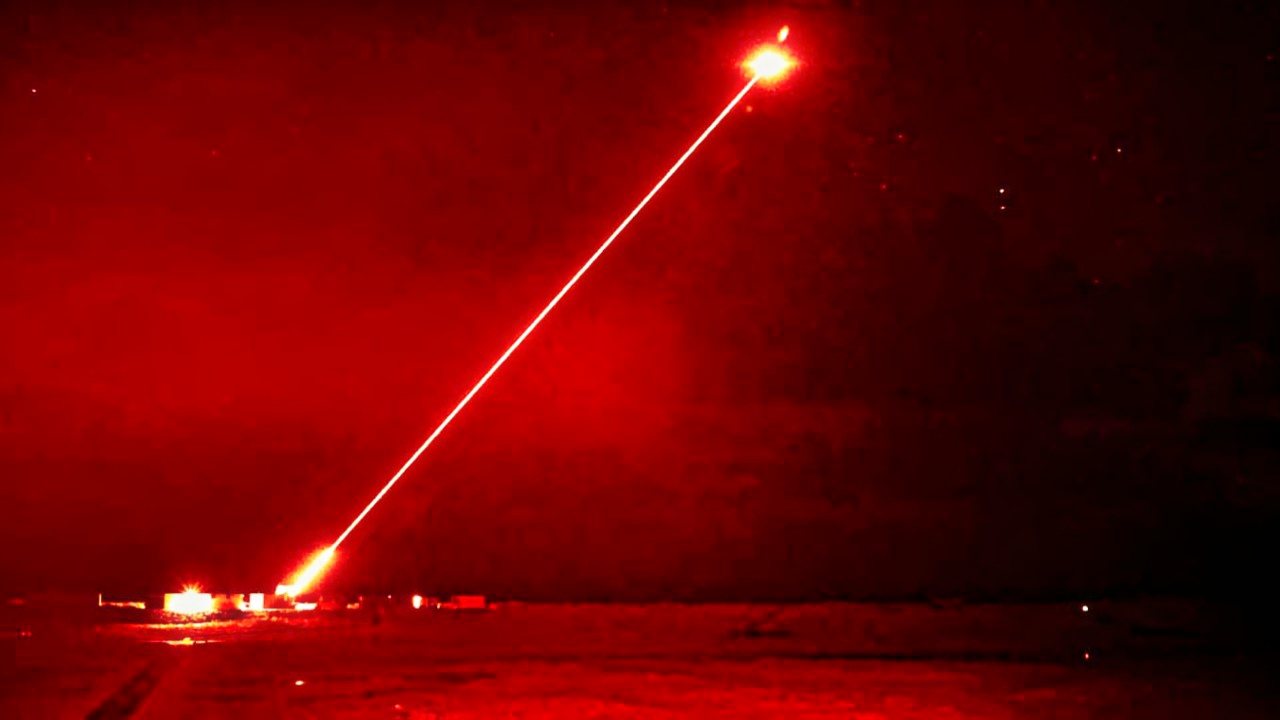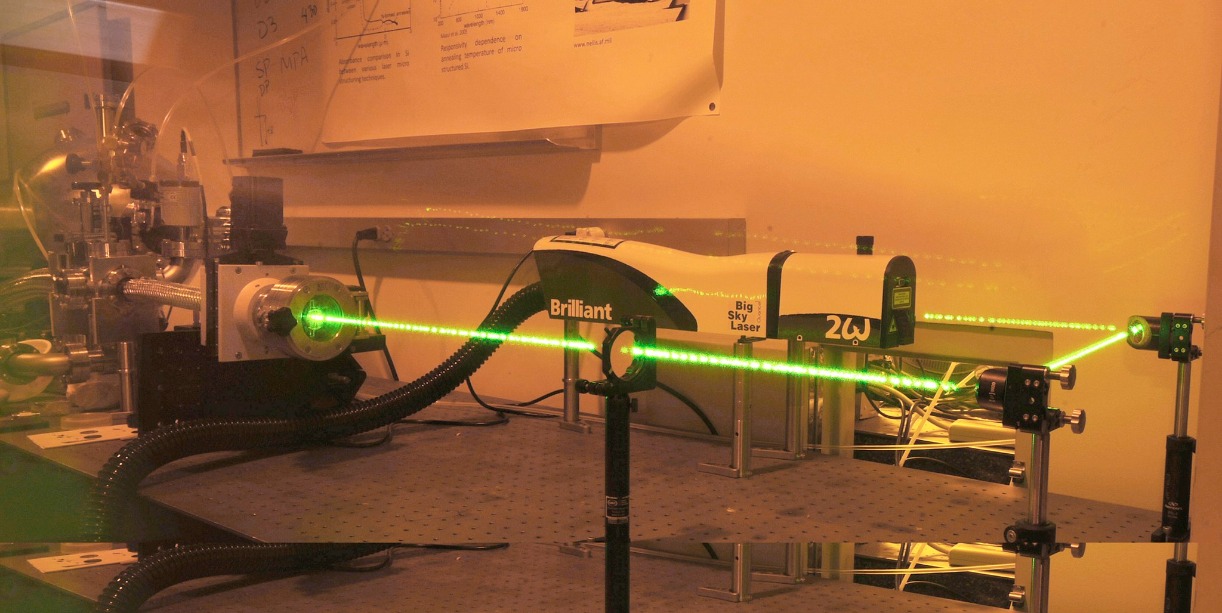The Navy Could Become A Laser Powerhouse
Despite decades of research and billions invested, the U.S. Navy's progress in developing high-energy lasers (HELs) and high-power microwaves (HPMs) has been slow, prompting criticism from Vice Admiral Brendan McLane. In contrast, the UK's DragonFire platform has demonstrated impressive capabilities.
Summary and Key Points: Despite decades of research and billions invested, the U.S. Navy's progress in developing high-energy lasers (HELs) and high-power microwaves (HPMs) has been slow, prompting criticism from Vice Admiral Brendan McLane. In contrast, the UK's DragonFire platform has demonstrated impressive capabilities.

-The U.S. Air Force has seen success with its H4 palletized laser weapon, while the Navy's HELIOS system by Lockheed Martin shows promise but is not yet fully operational.
-Despite high initial costs, these directed-energy weapons offer significant long-term savings and strategic advantages, potentially transforming naval defense with cost-effective, precision targeting of aerial threats.
Can the U.S. Navy Catch Up to the UK's DragonFire Laser System?
"When I was in Bahrain as [the Destroyer Squadron 50 commanding officer] 10 years ago, the afloat staging base USS Ponce had a laser on it," Vice Admiral Brendan McLane told reporters ahead of the Surface Navy Association conference months back, the Navy Times reported. "We're 10 years down the road and we still don't have something we can field?"
As the Navy Times also noted months back, "High-energy lasers, or HELs, and high-power microwaves, or HPMs, would offer the surface fleet another weapon for countering overhead threats, including unmanned aerial vehicles and rockets. Despite decades of research and development and billions of dollars spent for a threat like the one the Navy now faces in the Red Sea, such systems have yet to enter the surface fleet and broader military in a meaningful way, according to outside analysts and service leaders."
It should be further added that McLane's comments come as the Royal Navy recently tested its DragonFire platform, which was able to strike a £1 coin from a distance of up to a kilometer away, the UK's Ministry of Defence (MoD) announced.
In addition to its extreme accuracy, the UK's DragonFire platform can engage targets at the speed of light, while its intense beam of light can literally cut through the target, leading to structural failure or more impactful results – such as if an inbound missile's warhead is targeted.
So why doesn't the U.S. Navy have a similar HEL to DragonFire?
It isn't actually for lack of trying – and the technology that once existed only in the realm of science fiction is slowly becoming reality.
That means, someday soon, the U.S. Navy could be a real laser powerhouse.
U.S. Air Force Efforts
Last summer, the United States Air Force Life Cycle Management Center and Raytheon Technologies announced the first successful test of the Air Force's first palletized high-energy laser weapon. The tests were conducted during four days of continuous live-fire exercises at White Sands Missile Range in New Mexico.
Known as “H4,” the palletized laser weapon was developed to protect people and assets against short-range aerial threats. It has passed the Air Force’s Test and Assessment plan, which included multiple days of live-fire exercises to acquire, target, track, and destroy drone targets in short-range attack, swarm attack, and long-range threat scenarios.
The H4 is the fourth operational laser weapon system that Raytheon Technologies has delivered to the United States Air Force. It is also the eighth total system the company has delivered to the U.S. Department of Defense (DoD).
Do the Dew
Also known as "directed-energy weapons" (DEWs), these have been seen as a serious force multiplier, which is why so much emphasis has been placed on their development. These have included efforts in High Power Microwave (HPM) and High Energy Laser (HEL) systems.
The U.S. Navy has been working for more than a decade on various efforts to equip warships with laser weapons that could confuse or destroy enemy systems. The service's fiscal year 2023 (FY23) budget request had called for more than $103 million to support half a dozen laser weapon concepts.
It was in August 2022 that Lockheed Martin announced it had delivered to the U.S. Navy a 60+ kW-class high-energy laser with integrated optical dazzler and surveillance (HELIOS). It was the first tactical laser weapon system that could be incorporated into existing ships and provide directed energy capability to the fleet.
Reported to be integrated and scalable by design, the multi-mission HELIOS system will reportedly be able to provide tactically relevant laser weapon system warfighting capability as a key element of layered defense architecture. The HELIOS system could further support long-range intelligence, surveillance, and reconnaissance (ISR) missions.
Lockheed Martin was awarded the Surface Navy Laser Weapon System (SNLWS) Increment 1, known as HELIOS, contract in January 2018 and has made steady progress on this rapid Directed Energy prototype.
Cost Savings on Lasers
Though it could be costly to develop the weapons, in the long-run it would be a truly worthwhile investment.
As the Navy Times further reported months back, DEWs could help the warships conserve their respective finite munitions supplies while on station. The 60-plus confirmed intercepts of drones and missiles that targeted U.S. Navy warships and commercial vessels in the Red Sea have largely relied on the Standard Missile-2, or SM-2, although service officials have declined to say precisely what has been fired in each engagement.

One of the clear benefits of lasers and other DEWs is the price tag. Rather than expending missiles that cost anywhere from tens of thousands to millions of dollars each to manufacture, a laser depends only on electrical output, which can be generated for less than $1 per shot.
Author Experience and Expertise: Peter Suciu
Peter Suciu is a Michigan-based writer. He has contributed to more than four dozen magazines, newspapers, and websites with over 3,200 published pieces over a twenty-year career in journalism. He regularly writes about military hardware, firearms history, cybersecurity, politics, and international affairs. Peter is also a Contributing Writer for Forbes and Clearance Jobs. You can follow him on Twitter: @PeterSuciu. You can email the author: [email protected].
All images are Creative Commons.


